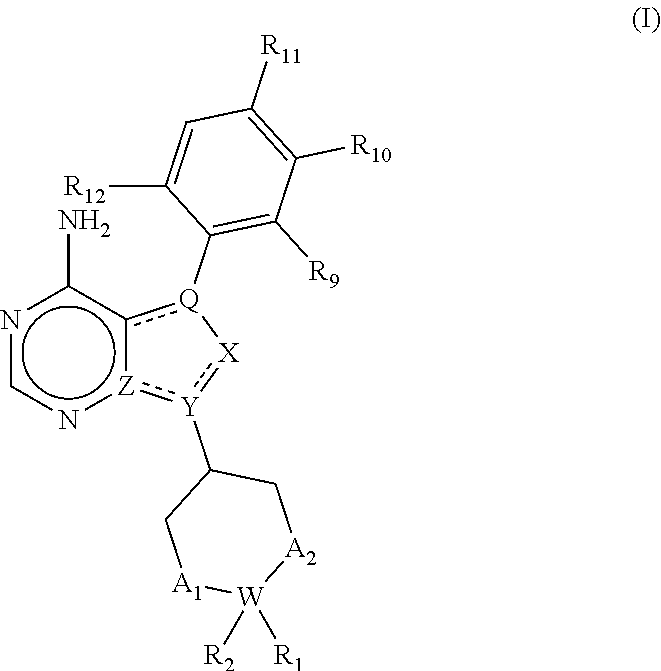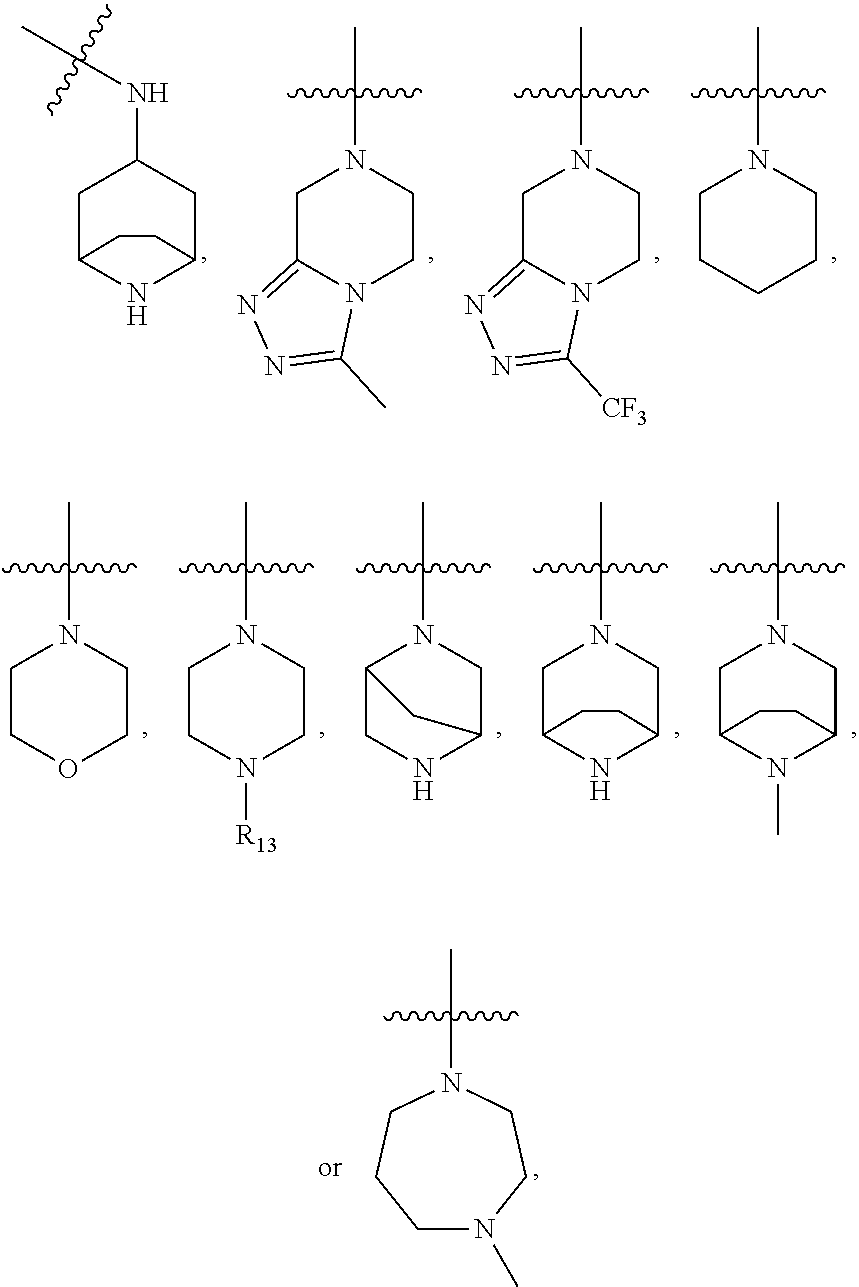Compounds for treating or inhibiting recurrence of acute myeloid leukemia
a myeloid leukemia and compound technology, applied in the field of compound for treating or inhibiting acute myeloid leukemia, can solve the problems of low survival rate in cases of acute recurrence and concern, and achieve the effect of inhibiting the growth of leukemic stem cells and inhibiting the recurrence of acute myeloid leukemia
- Summary
- Abstract
- Description
- Claims
- Application Information
AI Technical Summary
Benefits of technology
Problems solved by technology
Method used
Image
Examples
example 1
7-((trans)-4-(4-methylpiperazin-1-yl)cyclohexyl)-5-(4-phenoxyphenyl)-7H-pyrrolo[2,3-d]pyrimidin-4-amine and
example 2
7-((cis)-4-(4-methylpiperazin-1-yl)cyclohexyl)-5-(4-phenoxyphenyl)-7H-pyrrolo[2,3-d]pyrimidin-4-amine
[0247]
[0248]The solution of 4-(4-amino-5-(4-phenoxyphenyl)-7H-pyrrolo[2,3-d]pyrimidin-7-yl)cyclohexanone (500 mg, 1.25 mmol), 1-methylpiperazine (0.4 mL, 3.76 mmol), acetic acid (0.2 mL, 1.88 mmol) and molecular sieves (1.0 g) in 1,2-Dichloroethane (20 mL) was stirred at room temperature for 5 hours. Then, Sodium triacetoxyborohydride (398 mg, 1.88 mmol) was added and continued to stir for 16 hours at room temperature. Water (100 mL) and dichloromethane (100 mL) were added to the reaction mixture, a saturated aqueous solution of Sodium bicarbonate (100 mL) was further added thereto, and the mixture was partitioned. The organic layer was washed with brine (60 mL) and dried over Sodium sulfate and concentrated to purify by flash chromatography (DCM:MeOH=10:1) to obtain 7-((trans)-4-(4-methylpiperazin-1-yl)cyclohexyl)-5-(4-phenoxyphenyl)-7H-pyrrolo[2,3-d] pyrimidin-4-amine as yellow sol...
example 86
6-Bromo-7-((trans)-4-(4-methylpiperazin-1-yl)cyclohexyl)-5-(4-phenoxyphenyl)-7H-pyrrolo[2,3-d]pyrimidin-4-amine
[0251]
[0252]To the solution of 7-((trans)-4-(4-methylpiperazin-1-yl)cyclohexyl)-5-(4-phenoxyphenyl)-7H-pyrrolo[2,3-d]pyrimidin-4-amine (500 mg, 10.4 mmol) in dichloromethane (15 mL) was added NBS (368.8 mg, 2.07 mmol) by portions at room temperature. Then, the mixture was continued to stir for 16 hours. The mixture was concentrated to purify by flash chromatography (DCM:MeOH=15:1) to obtain yellow solid (280 mg, 48.3% yield). LCMS: Calculated Exact Mass=560.2; Found [M+H]+ (ESI)=561.8; 1H NMR (400 MHz, CHLOROFORM-d) δ ppm: 8.23 (br. s., 1H), 7.33-7.45 (m, 4H), 7.16-7.23 (m, 1H), 7.11 (dd, J=7.8, 5.3 Hz, 4H), 5.48 (br. s., 2H), 4.61 (br. s., 1H), 3.12-3.35 (m, 6H), 2.81-3.08 (m, 2H), 2.75-2.80 (m, 2H), 2.66 (br. s., 3H), 2.24 (br. s., 2H), 2.03 (d, J=11.3 Hz, 2H), 1.69-1.77 (m, 2H).
PUM
| Property | Measurement | Unit |
|---|---|---|
| body weight | aaaaa | aaaaa |
| body weight | aaaaa | aaaaa |
| pH | aaaaa | aaaaa |
Abstract
Description
Claims
Application Information
 Login to View More
Login to View More - R&D
- Intellectual Property
- Life Sciences
- Materials
- Tech Scout
- Unparalleled Data Quality
- Higher Quality Content
- 60% Fewer Hallucinations
Browse by: Latest US Patents, China's latest patents, Technical Efficacy Thesaurus, Application Domain, Technology Topic, Popular Technical Reports.
© 2025 PatSnap. All rights reserved.Legal|Privacy policy|Modern Slavery Act Transparency Statement|Sitemap|About US| Contact US: help@patsnap.com



